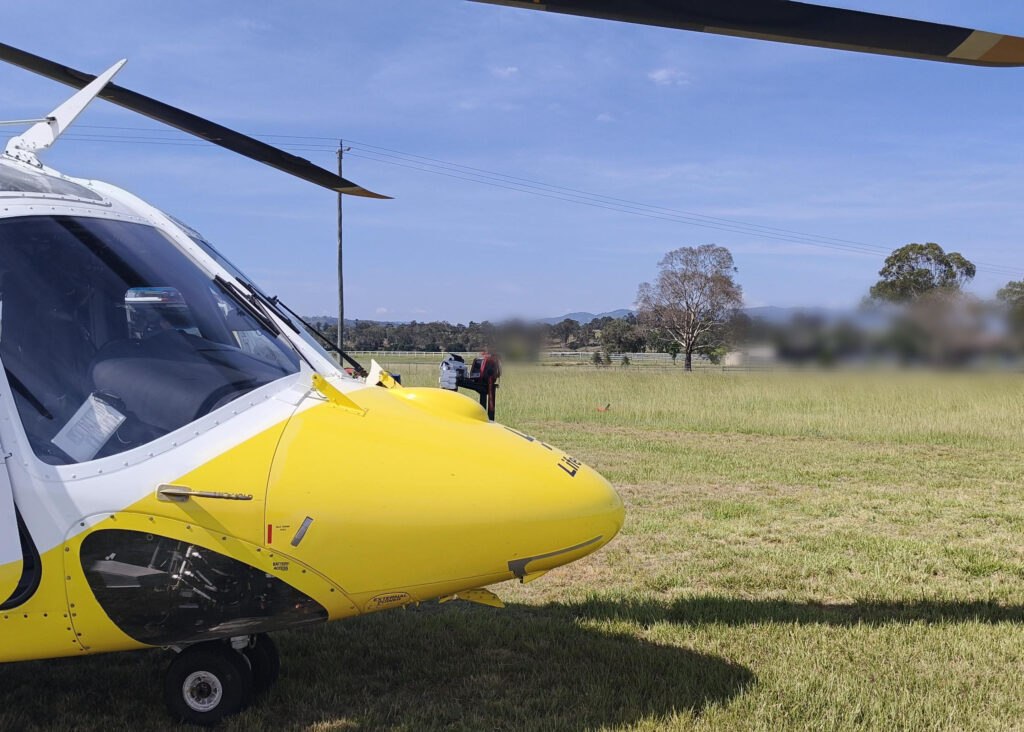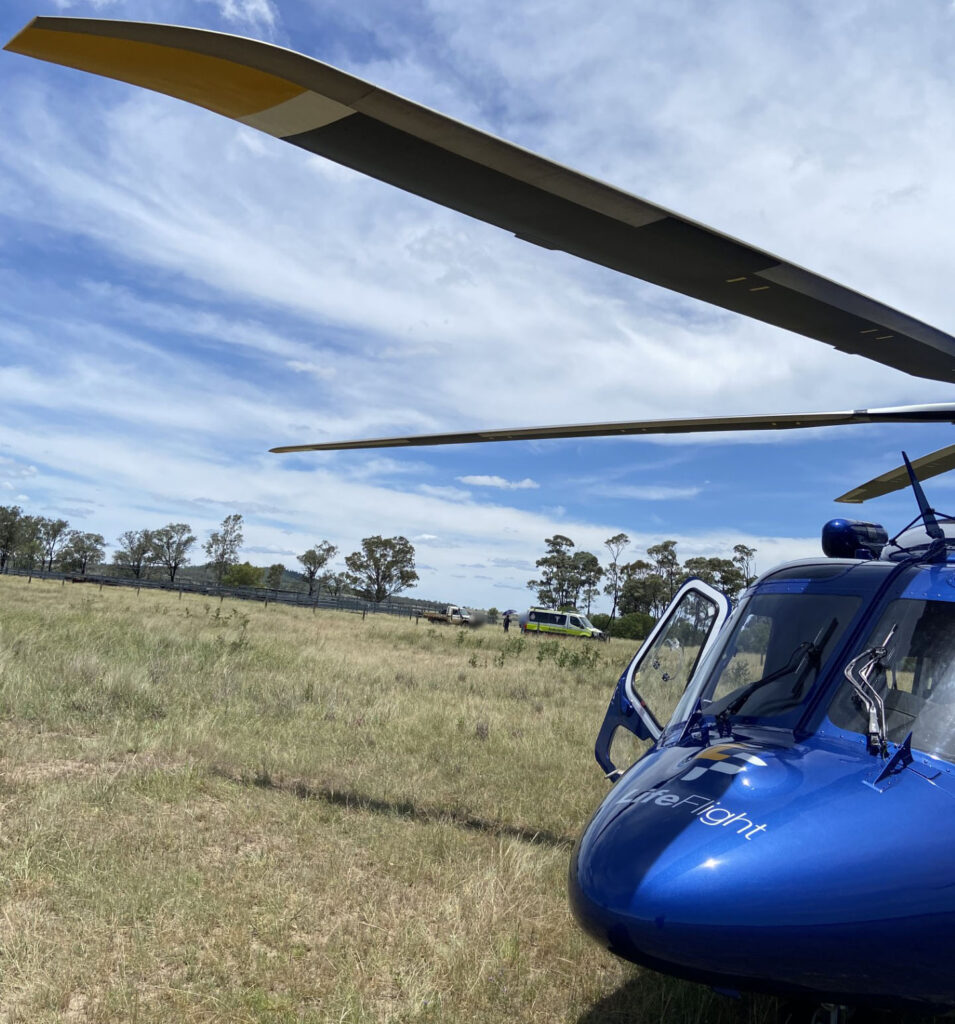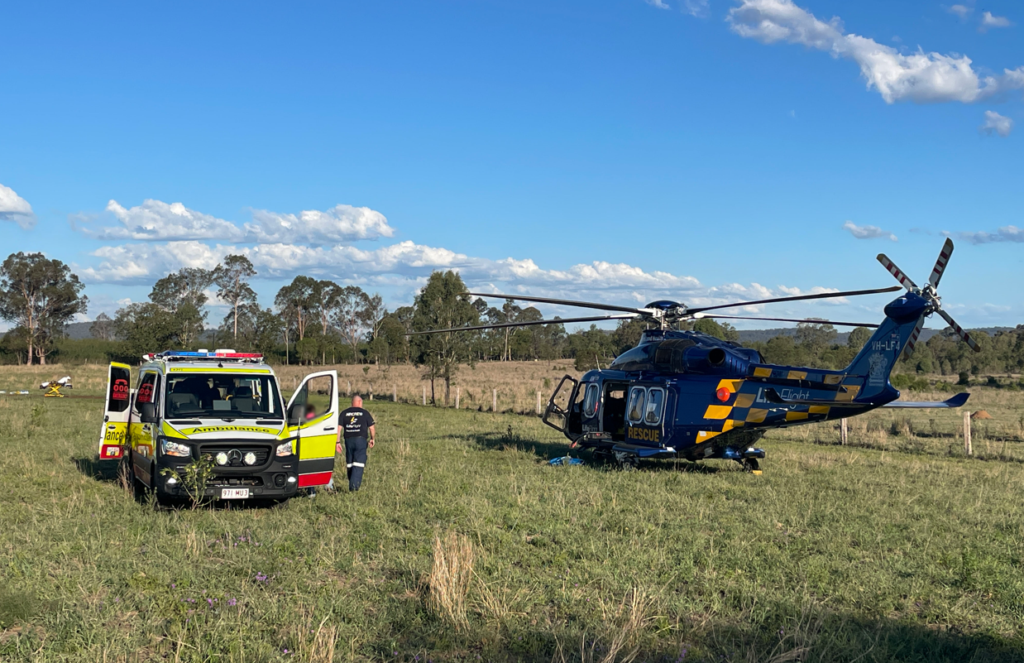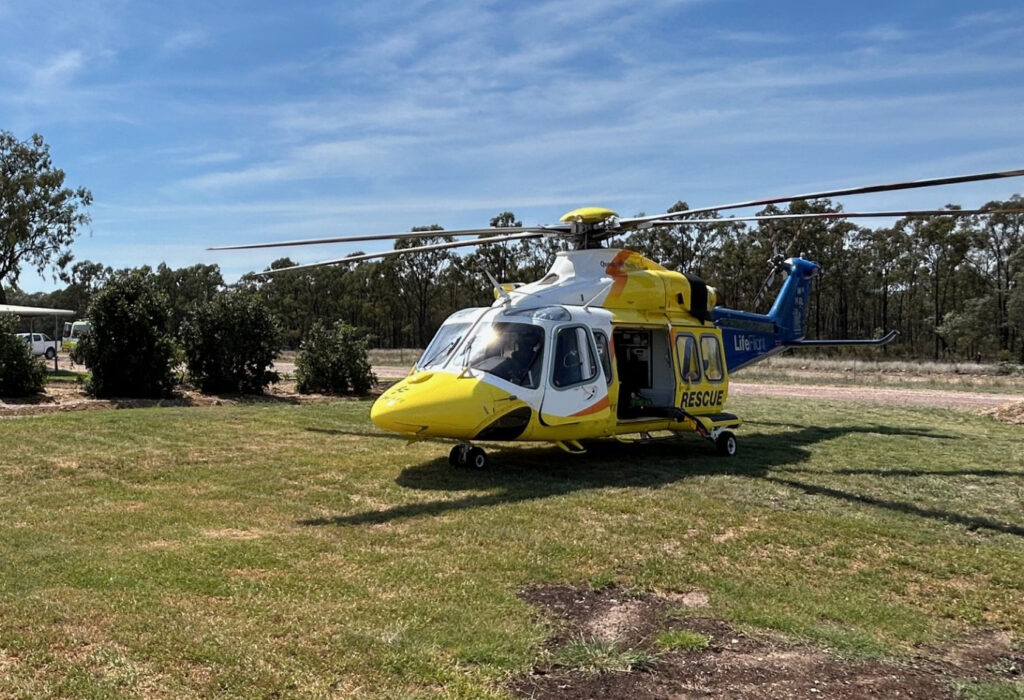A Swedish doctor who was part of the incredible team, which helped save the life of a young man during one of RACQ LifeFlight Rescue’s most challenging missions, has returned to serve the community again.
Five years after his first experience as an RACQ LifeFlight Rescue Critical Care Doctor, Martin Londahl is back on board the rescue choppers based at Toowoomba’s Clive Berghofer LifeFlight Centre.
Another two new retrieval registrars will also be joining the crew.
The trio will also be flying in the Maranoa region, onboard the LifeFlight Surat Gas Aeromedical Service (SGAS) helicopter, based at the Lee Family and Australian Country Choice LifeFlight Centre.
The Anaesthesia and Intensive Care Specialist spent the Covid-19 pandemic period working in a Swedish hospital, but with international borders open, he and his family just couldn’t resist returning to the region.
“We really enjoyed Toowoomba. We made good friends. It was a good town to live in. Really nice place, lots of good coffee. I really enjoyed the job. The base was great. Crews were great. I made some good mates. LifeFlight was good. We did some good jobs, I enjoyed that,” said Dr Londahl.
One mission that impacted deeply was in 2019 when two LifeFlight helicopter crews and a team of first responders were sent to rescue a teenager whose leg was caught in the winch wire attached to the rear of a skidder.
The young man’s leg was pulled into the heavy machinery and entwined in the winch drum from his toe to his upper thigh.
After several hours trying desperately to remove him, the difficult decision was made to amputate his limb at the scene, to free him from the machinery and save his life.
It was a challenging, in-field surgery.
“The thing that stuck with me was that there were so many moving parts. One of the pilots counted – we were 16 people, hands on removing him from the winch and everyone did their thing and it worked out and we made it…and you know, I was a small part of it and that was amazing” said Dr Londahl.
“He made it, so that was good.”
Dr Londahl is among a group of 25 doctors, who will be starting work on aeromedical helicopters and jets across Queensland, after completing an intensive training week with instructors from the LifeFlight Training Academy, which prepares them for the many challenges of retrieval medicine.
One of the most important and challenging aspects of the training, is learning how to be winched to and from a chopper.
“Some of our patients are in remote areas, that could be a mountainside, that could be in the bush that’s not accessible. We need to be able to insert our paramedic and doctor into that environment so they can care for the patient and ultimately recover them. Whilst it’s not something we do every day there is a chance that they could go out next week and be tasked to a job on the side of a mountain or otherwise that entails winching them in to save that patient,” said LifeFlight Chief Aircrew Officer Nathan Minett.
The exercise teaches double lift techniques, when two crew members are winched. The doctor also learn how to bring a stretcher patient safely into the aircraft.
“So, they’re practicing the two skill sets in the aviation environment that we really need them to embed and make sure that they know really well,” said Nathan Minett.
The retrieval registrars were also strapped into a metal helicopter simulator, which is then dunked underwater in different emergency scenarios, as part of Helicopter Underwater Escape Training (HUET).
It is a case of always hoping for the best, but preparing for the worst.
“It is highly unlikely that they’re ever going to use it, but it’s a safety issue and this can be developed for if the aircraft had an issue and had to go to the ground and was forced landing to the ground with smoke and fire being maybe the issue, so with the HUET training we do, a lot of it is to do with getting seatbelts on properly, locating the exit knowing where it is without actually looking for it. So, the whole package is designed for safety in the aircraft in regard to what may happen whether it be in the water or into the ground,” LifeFlight HUET Manager Mick Dowling said.
Back on dry land, at the Queensland Combined Emergency Services Academy at Whyte Island, the doctors were put through their paces in a series of simulated emergency scenes.
They were faced with some of the confronting realities of pre-hospital care, in realistic scenarios including a worker injured in a confined space and in need of evacuation from a ship, a near-drowning incident in a backyard pool and a car crash with fatalities and survivors.
The majority of the RACQ LifeFlight Rescue Critical Care Doctors’ work is performed on behalf of Queensland Health, tasked by Retrieval Services Queensland, within Queensland Ambulance Service.










